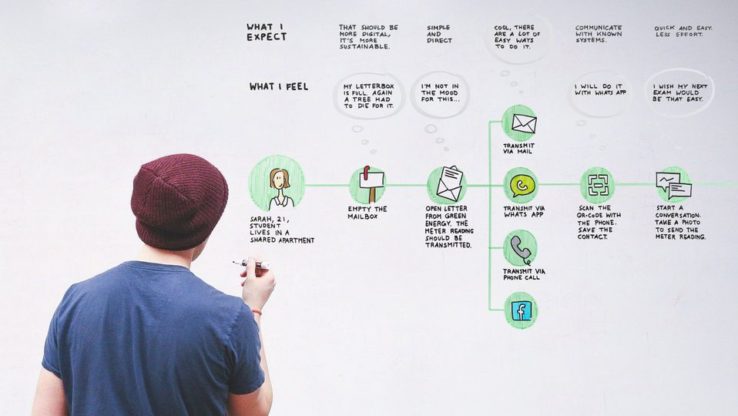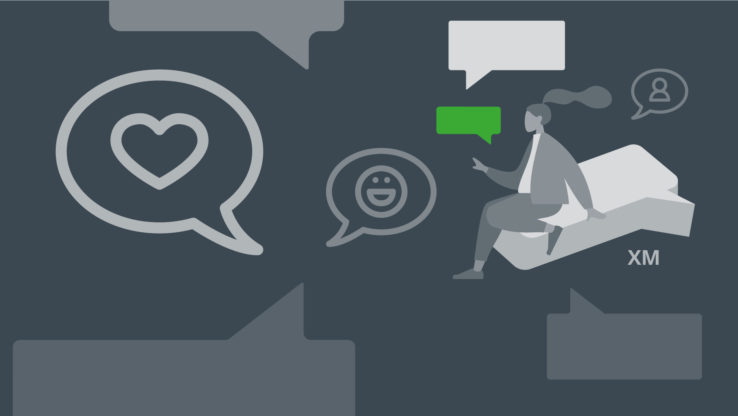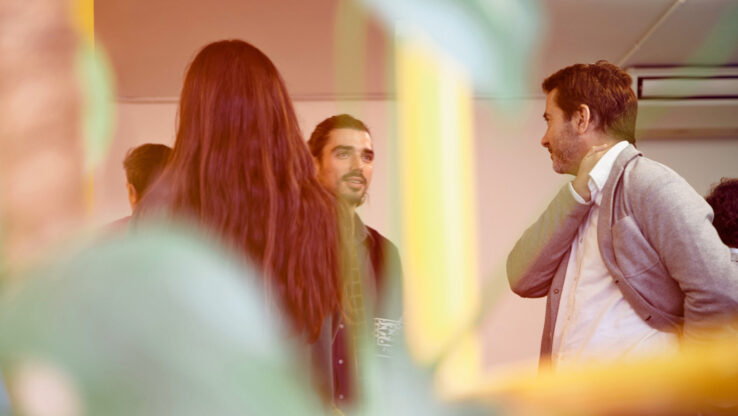
Employees are leaving unusable technology behind
What digital offerings do employees need to complete their daily tasks more effectively? Do employees even use the tools provided, or do they need to find a workaround due to a lack of functionality? Many projects stumble over the issue of user acceptance after the new solution has been rolled out. This is a worst-case scenario for the project teams and must be avoided. In our projects, we first use various methods to uncover precisely the user’s pain points, needs, and wishes – before the first line of code is written. Only when the new software satisfies the users’ needs will a new digital solution be adopted and utilized efficiently. All the findings flow into the bigger picture: Employee Technology Experience Management. Cody Wedl, our Head of Experience Management, takes us through the ETX world at sovanta.
How the New Experience Economy is influencing Employee Experience
Joe Pine’s famous chart depicting the experience economy is legendary in helping companies ensure a customer-first approach for how they do business. Over the past two years consumers have grown accustomed to a personalized experience which has been unofficially dubbed, The New Experience Economy, which has done 2 things:
- It has forced companies to further up their game to either become competitive or continue to lead.
- It has created a larger demand from employees for a great experience (digitally), which was only considered a ‘nice to have’ by many, only a few years ago.
As the demand for qualified employees increases, so too is the demand for a quality employee experience. As flexible work and home office policies still linger for many of us, one of the greatest impacts on employee experience is the digital user experience employees work with on a daily basis.
As personalization drives change on the customer experience side with the New Experience Economy, personalization is now in high demand within the realm of the employee experience as well. Standard software provided on an enterprise level is a great baseline, but it is also ‘the jack of all trades and the master of none’. Providing a seamless technological experience based on the end-to-end processes employees perform is quickly becoming the new normal; and due to our continuing flexible work policies, one of the biggest differentiators in obtaining and retaining top talent.
Tools to provide a Clear ROI
One of the biggest problems IT (HRIT, Digital IT, etc. are all included) faces today is keeping up with the shifting needs and demands of business. Employee Technology Experience, which has been coined by Qualtrics, highlights the need to track the technology provided to employees. Gathering feedback about the technology provides IT a better understanding of current pain points and where best to prioritize future investments.
Operational excellence has been at the forefront of company’s KPIs for decades. But it still amazes me how many companies do not have the end-to-end processes mapped out and defined (i.e. customer and employee journeys) for the users. Journey mapping is a powerful exercise which is further solidified with great technology like SAP Signavio. By mapping out the journeys with SAP Signavio, companies also set themselves up to embed intelligent Robotic Process Automation (iRPA) as well.
Redefining Processes around customer and employee needs
Everything that is executed needs to have a business need. Various tools and techniques can be used to uncover this need. Here 5 exciting examples:
Pulse Check, UX Audit or User Journey Mapping
We help our customers to close technology and digital employee experience gaps by discovering the true needs from the user groups. Our goal: Providing the best technology experience for employees!








